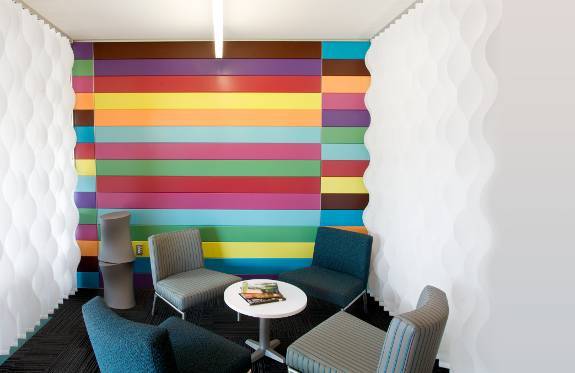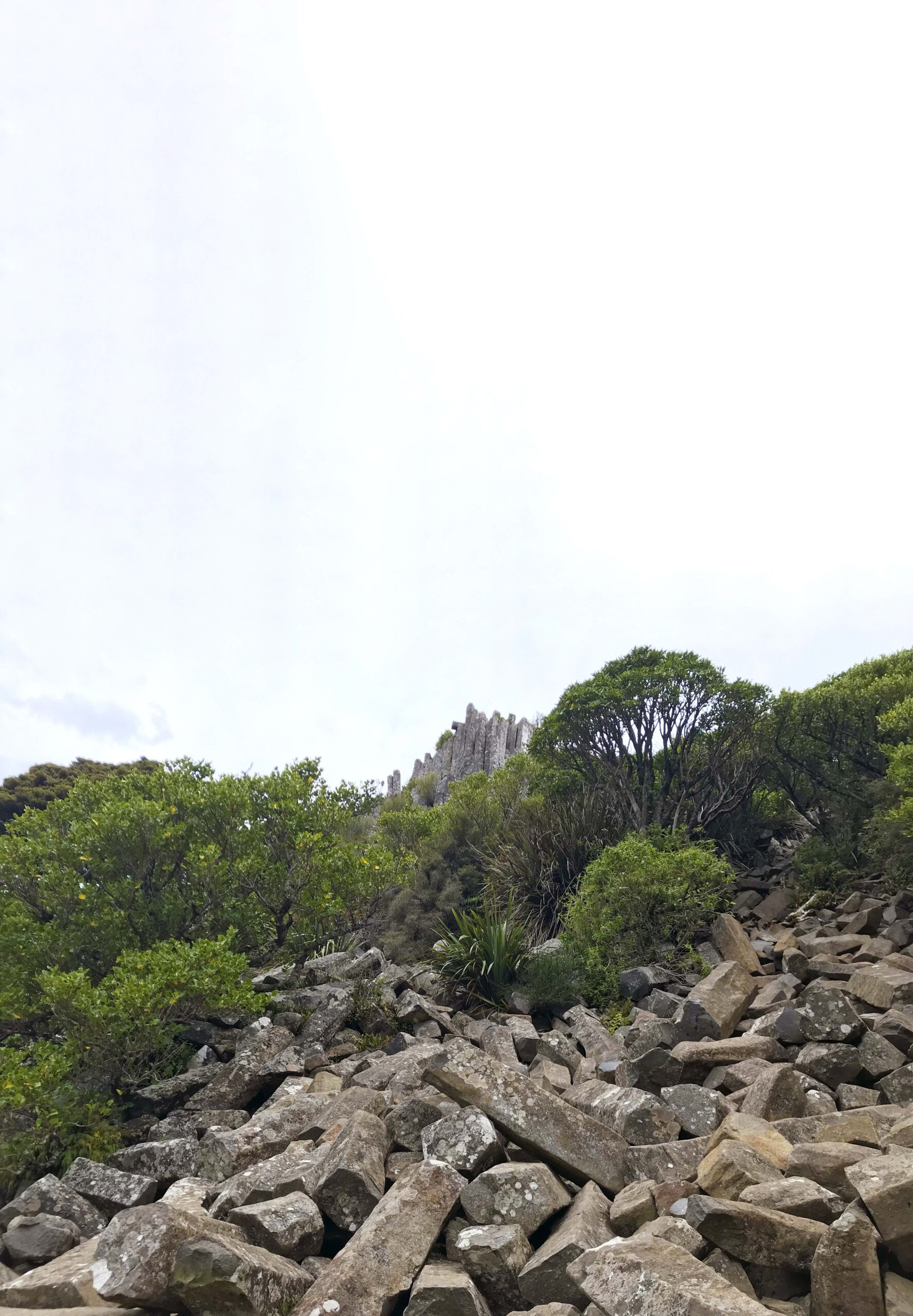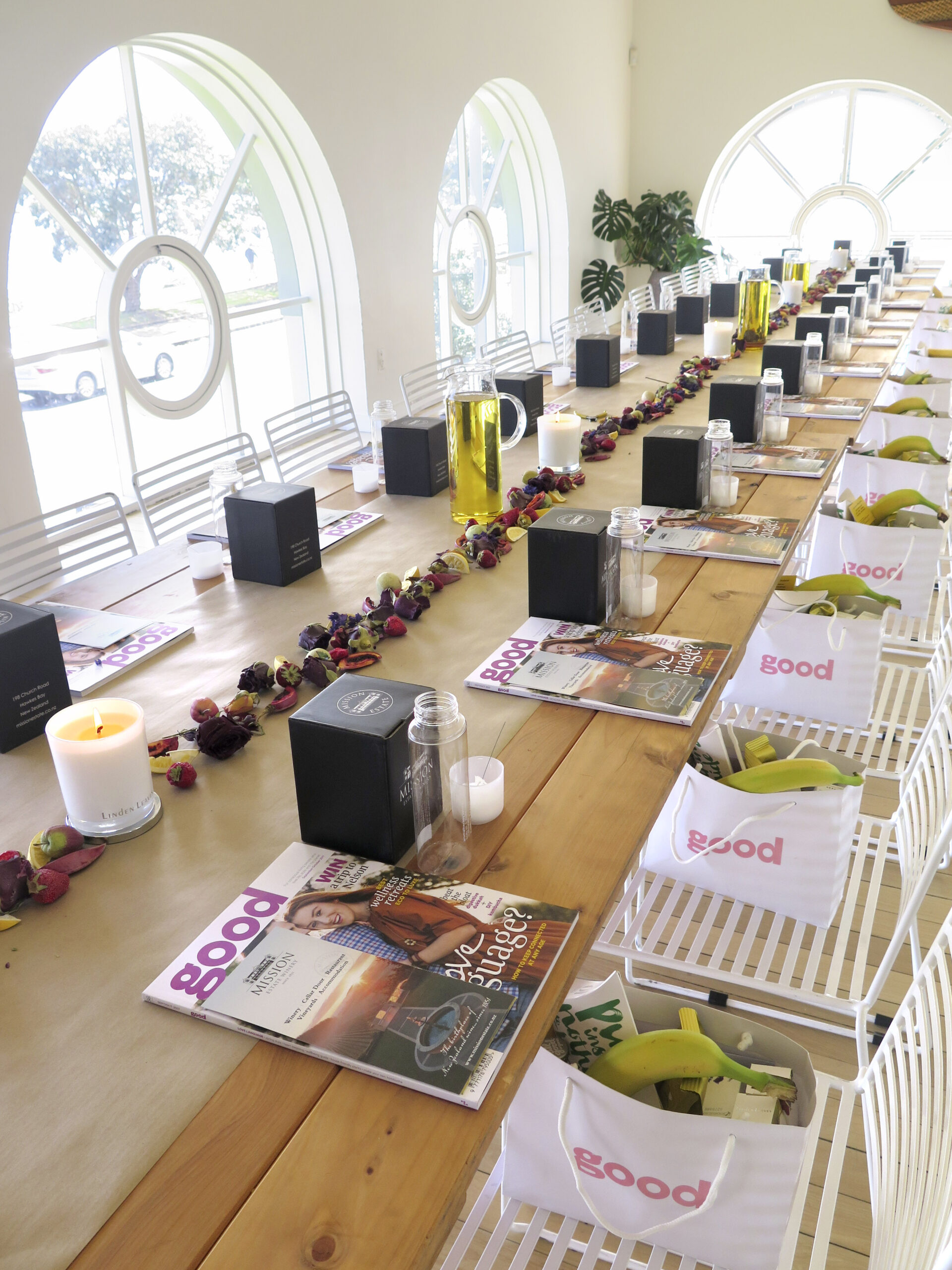Most of us spend our weekdays at work, but at what cost to our health and happiness? Here’s how to make quick, cheap and effective changes to your work environment that’ll help make you and your colleagues happier, healthier, greener and more productive.
Photo: Jeff Brass / Think Photography
Happier
Your workplace is a small town
A vast office with room to cartwheel is not where happiness lies. Workers in smaller offices tend to be happier, feel more productive and turn up for work more often than their more spaciously housed colleagues, found a recent Swiss survey of 125 companies.
While the study results fly in the face of conventional office-envy, they match the experience of New Zealand company Express Data. The best employer in Australia and New Zealand, according to the most recent annual Hewitt survey, Express Data last year moved its 50 Auckland staff to a new building in Mt Wellington to make room for future growth. General manager of sales and marketing Paul Plester says it didn’t take long for the company to discover the shortcomings of too much space.
“We went for three times the office space and three times the warehouse space to cater for growth, but initially we spread out around the available space. After about six months we moved everyone into one end of the building. By bringing people back together again we found vital information was communicated more readily, nobody was isolated and everybody who needed to be talking was talking,” says Plester.

“Ad hoc communication is probably the most underrated method of communication; it creates a buzz in the office and it guarantees information and ideas are shared.”
Improving communication can be as simple as moving a few people into one office space. You can pitch it to the boss on the basis it will free up another office, providing space for a separate meeting room or a communal area for time out. Freeing up extra space will also mean you and your colleagues can find a quiet spot to work when you need one. The Swiss study found one of the major causes of workplace conflict was disturbing noise, such as loud phone conversations or meetings.
Express Data’s new building, designed by MGA Innovation, includes bright indoor and outdoor spaces—as well as an onsite cafe—where employees can take breaks. Communal working spaces are also provided where staff can interact with colleagues and clients. Those interactive spaces are no accident, according to Warren Brighouse of MGA Innovation, who says shared spaces are increasingly recognised as being critical to a positive company culture and to productivity.
Outliers author Malcolm Gladwell, whose books consider the different drivers of success, says workplace design is like urban design. “To thrive, an office space must have a diversity of uses—it must have the workplace equivalent of houses and apartments and shops and industry. That’s because innovation is fundamentally social.
“The best ideas in any workplace arise out of casual contacts among different groups within the same company,” says Gladwell.
And like urban spaces, workspaces—including classrooms—need natural light and plant life. “In good office design the aim should be never to be too far from natural light,” says Brighouse. “Exposure to natural light has a positive effect on the endorphins in the body and that affects mood and alertness.”
Turns out the humble desk pot plant can also boost your spirits. As national design manager for plant hire company Ambius, Elaine Wright-Williams has filled plenty of offices with plants, from BNZ’s Queen Street HQ to 3M’s Albany office. She says the greenery makes people feel valued because they can see an investment in their workspace. “Plants have also been proven to have a positive psychological impact, elevating moods and reducing anxiety and stress.” And if you’re thinking, ‘Well, she would say that’, read on.
Healthier
How plants can help
Mondayitis can feel like a serious work condition, but it doesn’t have a patch on some of the nasties floating around the office.
Contrary to popular belief, air pollution is almost always greater indoors than out—and indoors is where most city workers spend a staggering 90 percent of their time. That means office workers are breathing in a lot of volatile organic compounds, or VOCs, says Professor Margaret Burchett of Sydney’s University of Technology
VOCs can come from external sources like the chemicals in exhaust fumes, but a good number of them are sharing your workspace in the form of paints, surface coatings, cleaning products, finishes applied to textiles, solvents, adhesives, floor varnishes, printers, photocopiers, furniture and carpets.
“At the low end of the scale this can cause loss of concentration, headache, dry eyes and throat, ‘fuzzy-head’ or nausea, but longer term you’re looking at more serious respiratory consequences like asthma, and also heart attacks and stroke. Urban air pollution has also been connected to birth defects, mental illness, more cardiovascular issues and some cancers,” she says.
Before you run screaming from the building, Burchett has some simple advice: put a plant on your desk. Her research has shown that just a few plants—and the bacteria in the potting mix—can dramatically reduce VOC levels to below the recommended safe levels. One test, in a 40-year-old building with no air-conditioning, found VOC levels of up to 500 parts per billion, Australia’s maximum permissible VOC load for indoor air. With three plants in the room, VOCs were reduced to harmless levels of less than 100 parts per billion.
As a general rule, the stronger the smell, the higher the VOC level. If your workplace is awash with new carpet and fresh paint smells after a refit, open extra windows if possible, or go for regular quick walks. Better still, before your employer embarks on an extreme makeover, suggest that the person managing the fit-out talks to the designer (or consults the internet) about sourcing low-VOC paints and furnishings.
You don’t have to replicate a tropical jungle in your office to reap the rewards of plants. The New Zealand Green Building Council quotes a minimum of one 15-centimetre-diameter pot for each work setting (or for every 15 square metres) in its Indoor Environment Quality (IEQ) rating criteria. To see how your workplace stacks up, check out Green Star New Zealand’s ‘Interiors Tool’ (good.net.nz/2/ greenstar), which provides a guide for the ideal office environment, including standards for ventilation, air quality, temperature, natural daylight, plants, views and noise.
Another simple way to make your workplace healthier (and more productive) is to make sick days acceptable—so don’t be the person who casts accusatory stares at someone returning from a week in bed with meningitis. If people feel they have to come in even when they have a raging fever and dripping sinuses, there is a much higher chance others will get sick.
Again, it’s plants to the rescue: they’ve even been associated with staff taking fewer sick days, says Wright-Williams—and if that’s not enough to convince you, a few plants can also help stabilise humidity and temperature, and reduce noise.

More productive
How to work smarter, not harder
Happier, healthier work environments lead to happier, healthier, more productive employees, so anything that’s good for your workspace is going to be good for you, as well as your boss’s bottom line. But if you really want to impress, improve or get more done in less time, here’s how to get maximum results from minimum effort.
Ask yourself—and your workmates—where your time, money or energy is being wasted. The answer might be staring you in the face. When BNZ bravely asked its staff of 5,000 what was negatively impacting on their time, one employee suggested that unnecessary passwords on internal databases wasted 30 seconds each time they were accessed. The bank made a conservative estimate that across all their staff that amounted to ten hours wasted a week, or 400 hours a year. BNZ dumped the passwords.
On the other hand, wasting time can be worthwhile—especially when it’s company policy. More than a little counter-intuitive, ‘20 percent time’ is the brainchild of global success story Google. Google allows its employees to use the equivalent of one full work day a week to pursue their own research interests and projects. The theory is that employees are more focused and motivated the other 80 percent of the time, and that it leads to big, bold ideas. It works: one employee’s personal pursuit ended up as Google Earth.

Wholesale changes to company policy may not be in your power, but subtle modifications to your own work practices can still have a big impact. It can take several minutes to get back into an activity every time you stop, so aim to see each task through once you’ve started it. If your job allows, try turning off your email alert and answering incoming messages on the hour, or at a scheduled time. Write a daily list of key tasks and endeavour to knock off the most critical items before you get hit by the midday slump.
Doing two things at once often means doing both badly—but not always. Kokako director Mike Murphy stumbled across a much better way to conduct company meetings when he combined them with training for the Oxfam Trailwalker event (see page 25). “It’s a really effective way of sharing ideas, and it has the effect of creating a more fluid environment where creativity comes more naturally.”
Murphy reckons companies that already incorporate exercise into their work culture might be willing to trial it for meetings or brainstorming sessions. Meeting notes can be managed using a cellphone to record ideas, or pertinent points can be jotted down on returning to work—the fresh air should hone concentration and memory. Teachers could even try taking a lesson outside.
Greener
Your eco-friendly workplace checklist
Paper
- Recycled paper is used for in-office printing
- Double-sided printing is set as the default on all computers
- Black and white printing is set as the default, preferably in ‘draft’ mode
- Misprints are used as notepaper (try www.lovenotes.co.nz)
- Printer cartridges are returned for recycling when empty (try www.empties.co.nz)
Energy
- All lights are switched off at night
- All computers are turned off at night
- Air con is used only when needed
- Computers are set to go to sleep when idle, rather than use screen savers
- Multipurpose printer also faxes and photocopies
- Laptops are used rather than desktops
- Nothing draws ‘vampire’ power (eg laptop chargers are unplugged when not needed)
Kitchen
- Appliances are energy efficient
- Cooking facilities are available to avoid waste from bought lunches
- Reusable utensils, cups, glasses and plates are supplied
- A coffee machine is supplied to reduce the number of disposable coffee cups used
- Coffee, tea, sugar and cocoa are fair trade (register to become a fair trade workplace at www.tradeaid.org.nz)
- The water cooler is plumbed in, to avoid transportation emissions from water bottle deliveries
Waste
- All desks have their own paper recycling trays
- There’s a big paper recycling bin …
- … and a clearly marked bin for other recyclables
- Food scraps are collected in a compost or bokashi bin
Transport
- Employees are encouraged to carpool, cycle or use public transport
- There’s somewhere to store a bike and take a shower
- The company’s signed up to green transport services like Cityhop (www.cityhop.co.nz) and Nextbike (www.nextbike. co.nz)
- Employees are allowed to work from home some or all of the time
- Carbon-neutral courier and taxi companies are preferred
Cleaning
- Dishwashing supplies and soap are non-toxic
- The cleaning company uses non-toxic products (try www.cleanplanet.co.nz)
- Toilet paper carries the Environmental Choice label or is made from recycled pulp
My home office, my castle

Working from home can be a liberating experience, but there are inherent risks in blurring the lines between your house and your office. A few practical steps can ensure your home office is a productive, energising work environment
Create a dedicated space: This is a non-negotiable rule for a successful home office, says HR consultant Joan Watson. An allocated workspace— ideally a room with a door you can close—helps put you in work mode, means you know where everything is and allows you to ‘switch off’ when you leave the space at the end of the day.
Natural light and air: Light and air are where the home office comes into its own. Unlike towering city office blocks, the windows in your home aren’t a condition of promotion and they actually open. Good natural light will boost your mood and fresh air will keep your mind alert, says Watson.
Illuminate your way: Sunshine won’t fulfil all your lighting needs and some projects may call for evening hours, so invest in good lighting for your home office. Lighting can be a very attractive feature and there are oodles of options when it comes to lamps, wall lights and overheads, so shop around to find something you love.
Director’s chair: After lighting, your seat is the next most critical purchase. A sore back and knotted muscles aren’t conducive to your best work, so spend a little extra to get a height-adjustable chair that supports good posture.
Personalise it: People stamp their mark on their office cubicle with photos or cards, but Watson says that’s often forgotten at home. “In their effort to have a tidy, efficient workspace people tend to make their home office a bit clinical. Colour and some meaningful things make your home office a nicer place to turn up to, and they can serve as inspiration when you’re in a lull.”
Lunch breaks: Working from home has its distractions—the TV , the book you’re dying to finish, the fridge—so plan your day to combat them. “Have a start time and a finish time just as if you were going into the office, and book in your breaks,” says Watson. Scheduled breaks allow you to enjoy time away from the desk without feeling guilty.
Make the most of flexi time: Being the master of your time is one of the upsides to working from home, so don’t cheat yourself of the pleasure. If you enjoy a mid-morning walk, Watson says do it—but make sure it’s part of your schedule and that you’re still getting in the work hours you need. “If you do it before you start, it could qualify as walking to work.”
Seeds of success: A few plants can dramatically reduce the levels of volatile organic compounds that might otherwise leave you feeling wheezy and drowsy.
Circle of friends: Design consultant Warren Brighouse says communal spaces are an increasingly popular feature of office design—with good reason. “A conversation with someone else can spark a new idea or even solve a problem you’ve been struggling with.” Contact with other people is just as vital when you work from home. Use the internet and professional associations to find like-minded souls to bounce ideas off, or schedule regular catch-ups with people you can talk to about your work.









